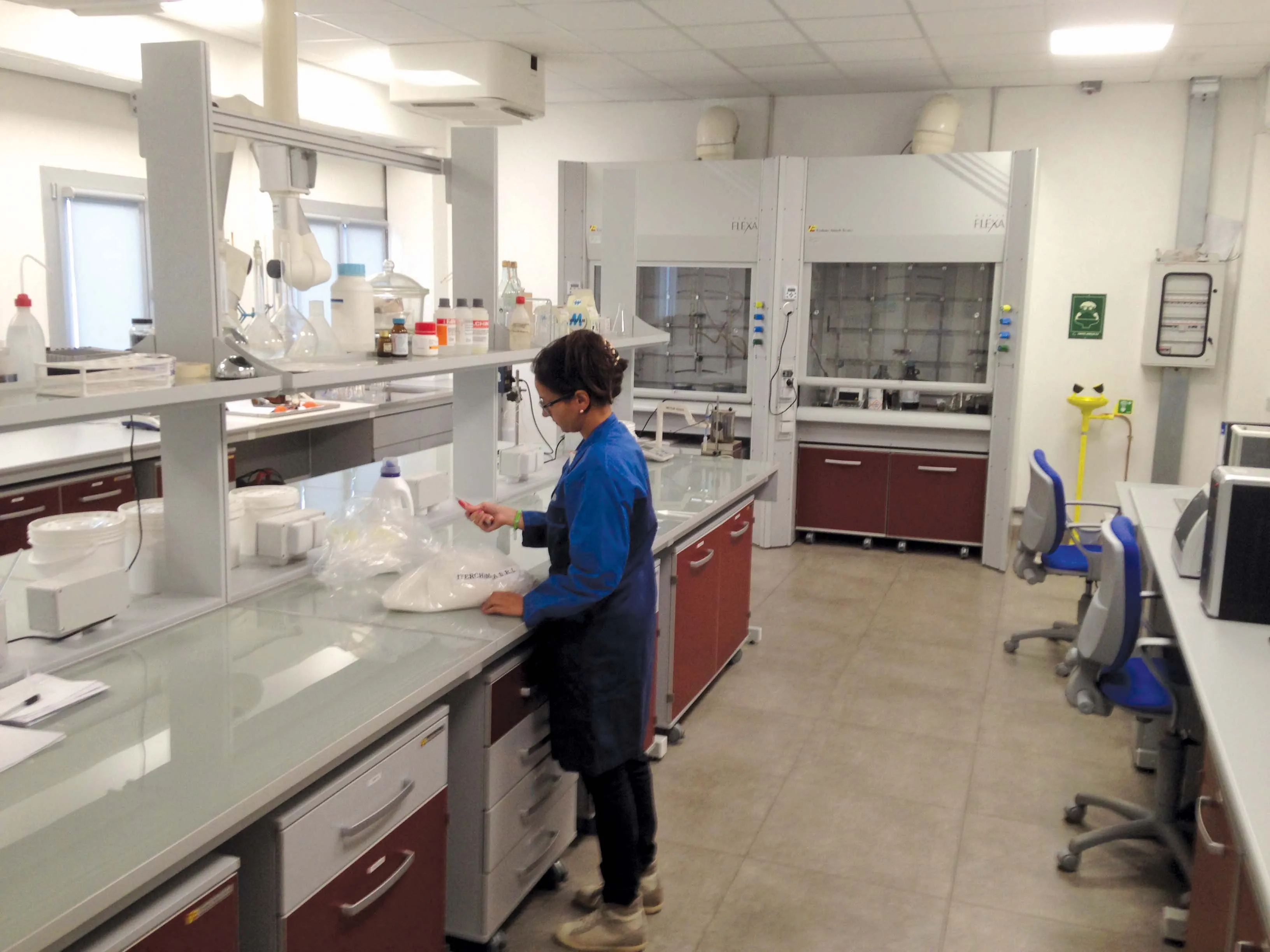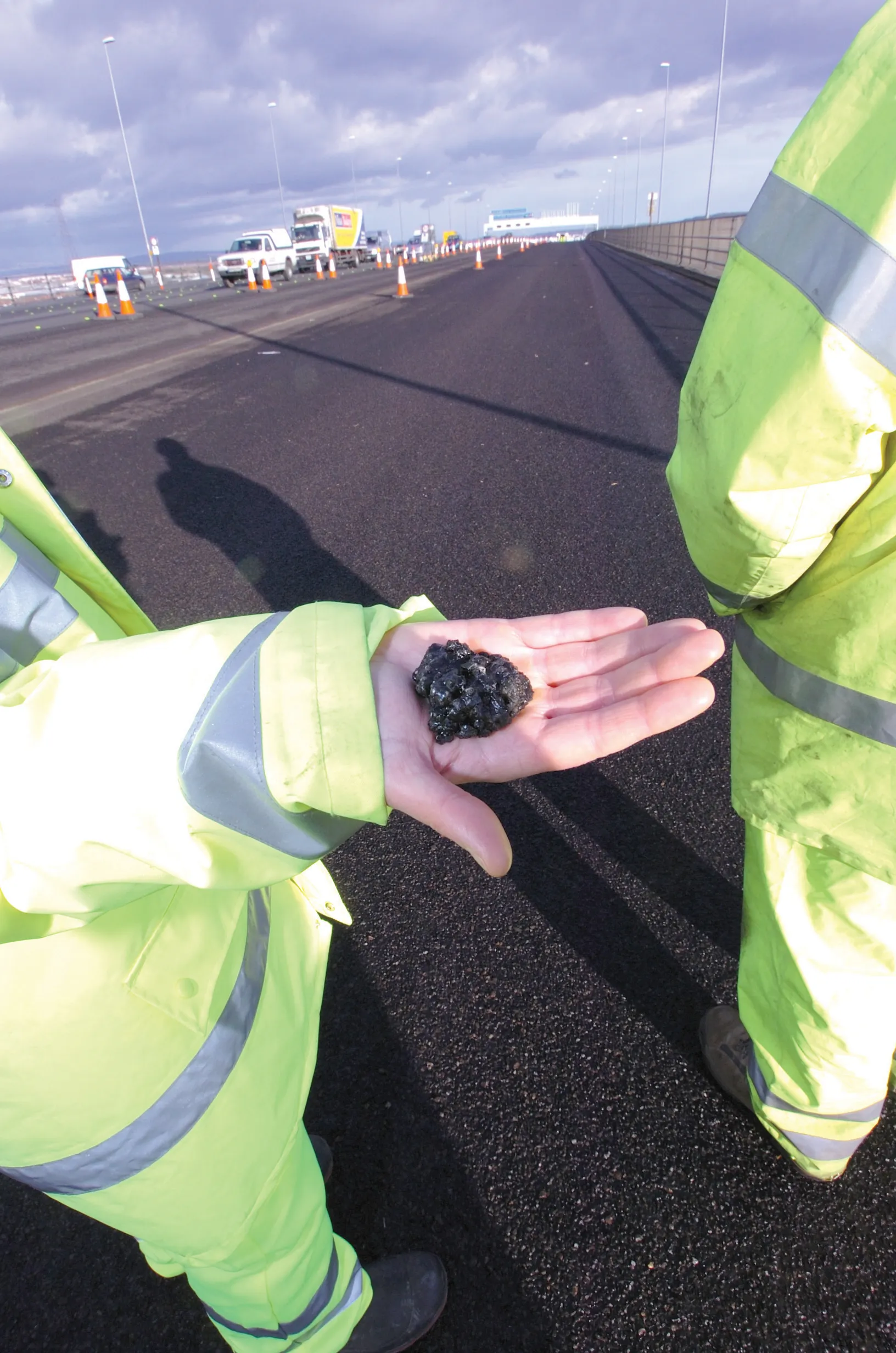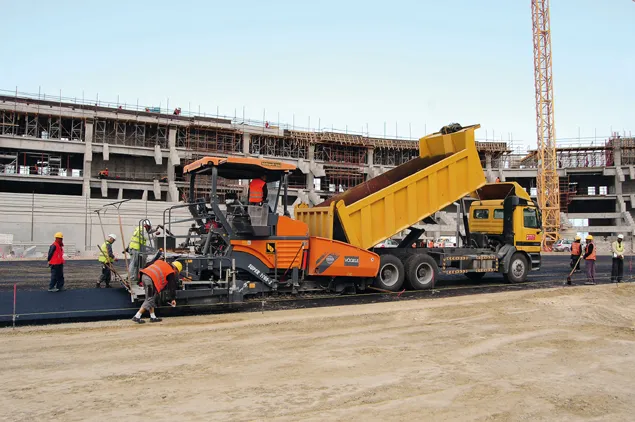The Singapore Grand Prix at the end of September was a race to remember for many reasons. Formula One's first night race saw excitement on the track, and it was a test for the high-performance surface containing Shell premium grade bitumen binder Cariphalte Racetrack. The inaugural Singapore Grand Prix was staged on a new street circuit and is open to regular motorists. Work on the track started in April 2008 and was completed in just two months. Because the road circuit is used for everyday traffic, the ne
July 20, 2012
Read time: 3 mins
The Singapore Grand Prix at the end of September was a race to remember for many reasons. Formula One's first night race saw excitement on the track, and it was a test for the high-performance surface containing 763 Shell premium grade bitumen binder Cariphalte Racetrack.
The inaugural Singapore Grand Prix was staged on a new street circuit and is open to regular motorists.
Work on the track started in April 2008 and was completed in just two months. Because the road circuit is used for everyday traffic, the new surfacing work had to be carried out overnight (between midnight and 6am).
A complicated project, the challenges for the Singapore6101 Land Transport Authority (LTA) associated with the surfacing of the track meant the design of an asphalt mix and pavement unique to the demands of the Singapore venue, not only because of its dual purpose as a busy city road by day and a Formula One circuit by night, but because of the varied climate and temperatures.
The LTA awarded Kim Peow Contractors and the asphalt specialist2644 Hanson Building Material as the paving contractors, with Shell Bitumen selected as the supplier of the special Cariphalte racetrack technology . With its high shear and stress properties, Shell Cariphalte Racetrack is a high-performance binder designed by Shell, and in combination with the specially high quality aggregates selected by Hanson Building Material an enhanced performance asphalt mix design in terms of resistance to extreme heat, rutting (or deformation), cracking, stripping and ageing.
The physical properties that make Shell Cariphalte Racetrack suitable for these high-stress surfaces are given by a three-dimensional polymer network within the bitumen.
The product is designed to have increased stiffness at high temperatures, to better withstand high temperatures and has a substantially increased elasticity.
Asada Harinsuit, Shell Bitumen vice president, said: "Shell Bitumen is renowned for its technical solutions with proven experience in this area, so we were glad when Shell Cariphalte Racetrack was selected as the right product for the job. For this application, the track surface has to remain constant, while being subject to a range of weather conditions and extreme punishment from the Formula One cars.
During the surfacing project, contractors had to remove and repave surface sections typically down to 2,000m² at a time because of the time limited working window. Throughout the project more than 15,000tonnes of premium asphalt was laid.
Shell Cariphalte Racetrack meets all7115 Fédération Internationale de l’Automobile (FIA) stringent track requirements and has been used on other high-stress surfaces. Products from the Shell Cariphalte range were also recently used for the runway upgrade at Singapore's Changi Airport to accommodate the Airbus A380.
The base bitumen (Pen 60/70) is produced in Shell's Bukom refinery in Singapore and then shipped to Shell's inland depot in Pandan, where it's modified with a special process and polymer formulation.
The inaugural Singapore Grand Prix was staged on a new street circuit and is open to regular motorists.
Work on the track started in April 2008 and was completed in just two months. Because the road circuit is used for everyday traffic, the new surfacing work had to be carried out overnight (between midnight and 6am).
A complicated project, the challenges for the Singapore
The LTA awarded Kim Peow Contractors and the asphalt specialist
The physical properties that make Shell Cariphalte Racetrack suitable for these high-stress surfaces are given by a three-dimensional polymer network within the bitumen.
The product is designed to have increased stiffness at high temperatures, to better withstand high temperatures and has a substantially increased elasticity.
Asada Harinsuit, Shell Bitumen vice president, said: "Shell Bitumen is renowned for its technical solutions with proven experience in this area, so we were glad when Shell Cariphalte Racetrack was selected as the right product for the job. For this application, the track surface has to remain constant, while being subject to a range of weather conditions and extreme punishment from the Formula One cars.
During the surfacing project, contractors had to remove and repave surface sections typically down to 2,000m² at a time because of the time limited working window. Throughout the project more than 15,000tonnes of premium asphalt was laid.
Shell Cariphalte Racetrack meets all
The base bitumen (Pen 60/70) is produced in Shell's Bukom refinery in Singapore and then shipped to Shell's inland depot in Pandan, where it's modified with a special process and polymer formulation.









